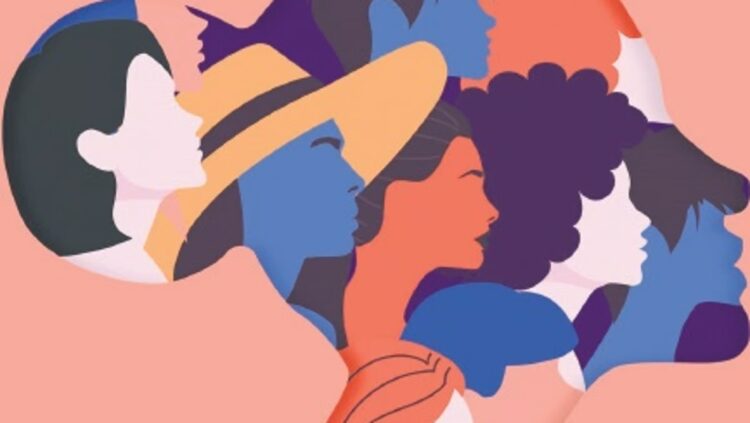The complex history of femininity
A lady is the whole circle. She have the ability to create, grow, and change.
The foundation of any civilization is its women. Despite having impacted the globe for the majority of recorded history, their contributions have gone unappreciated.

These positions have often been shaped and changed by shifting social standards, and art has functioned as a visual record of these status changes. These twisted perspectives have been portrayed in art for millennia, evolving from simple decorative motifs to manifestations of gender identity.
Based on research, the handprints found approximately 30,000 years ago on cave walls were the first paintings ever made, and they were depictions of women. Thus, it may be said with pride that women were among the world’s first artists. The oldest cave paintings in India are found in Bhimbetka, where women are seen engaging in a variety of occupations like hunting and sometimes even excavating rats from holes! As humankind’s nomadic lifestyle was altered by civilizations, pictures of women came to symbolize fecundity in particular. Compared to other ancient civilizations, women of the Indus Valley civilisation had far more important positions in society. Having children was crucial to their status, as seen by the many sculptures from this era that depict mothers tending to their young. The children in these mother figures were mostly male, suggesting that gender preferences were common even back then.
Women’s presence was seen by Babur as crucial to the legitimacy of his young kingdom when the Mughals conquered India. Later years during the reigns of Jahangir and Shah Jahan saw women, particularly those from royal families, treated as equals and sometimes elevated to the position of co-rulers. Women were virtually entirely absent from Mughal art, which was greatly inspired by Persian influences, in contrast to males. This might be because of the purdah system’s restrictions on the ladies of the court’s visibility. But regular women in public were shown as carrying out routine tasks, unconstrained by these traditions. For example, women are seen laboring alongside males in the Akbarnama, a history of Akbar’s reign, in the paintings of Tulsi and Miskin depicting the building of the Agra Fort. Numerous artworks depict women participating in celebrations as well.
Without a doubt, the paintings found in the Ajanta and Ellora caves are famous across the globe, but it’s fascinating to note that most of them include women as just lovely accents, added to the mostly male-centric murals to create the ideal aesthetics. Their smiles were embodiments of elegance, and their bodies were sensual. There aren’t many sculptures or paintings in which women are crucial to the story; the exceptions are the ones that depict Lord Buddha’s mother and scenes of ladies celebrating the birth of Lord Mahavira.
The British Empire replaced the Mughals as the dominant power, and colonization brought with it the creation of what became known as Company paintings. These paintings, created by Indian laborers employed by East India Company clients, provided glimpses into the daily routines of life in British India. These 19th-century paintings of women either depicted them as goddesses or as they went about their daily lives. They are also seen in several of these pieces of art as courtesans and dancers.
Thanks to Bengali artist Abanindranath Tagore, the country took on a feminine shape during the pre-independence period, when cries for liberation from colonial authority were becoming louder across the nation. He portrayed the country as Bharat Mata, or Mother India, in 1905. This was a crucial nationalist image that helped bring the divided nation together since love and strength are qualities of mothers. The picture gained immense popularity and served as inspiration for the independence movement in addition to becoming a household image that endures to this day.
Following independence, a feminist awareness was infused into creative manifestations, and women’s voices were heard via their own language thanks to the ascent of numerous talented female artists. Women’s artistic pursuits were still fraught with numerous taboos and prohibitions in the mid-1900s, just after independence. However, throughout time, fresh perspectives were progressively introduced by outliers such as Amrita Sher-Gil, whose self-portraits questioned the male gaze and the ways in which women were portrayed in art throughout history. As India gained its independence, more women were gradually free to pursue arts education and, through their impactful artwork, reclaim their bodies from the male interpretations that had dominated Indian art for ages. With this reclaiming and stronger depictions of feminine energy, the days of women in art as ornamental symbols or representations of child-bearing domesticity are practically over, and a new sense of a woman’s identity has emerged. Women were portrayed as symbols of social, political, and moral ideals in a variety of ways, from sensual and sensual to legendary and sacred. May these free representations of women usher forth a more equitable society for women as we move into new periods!







